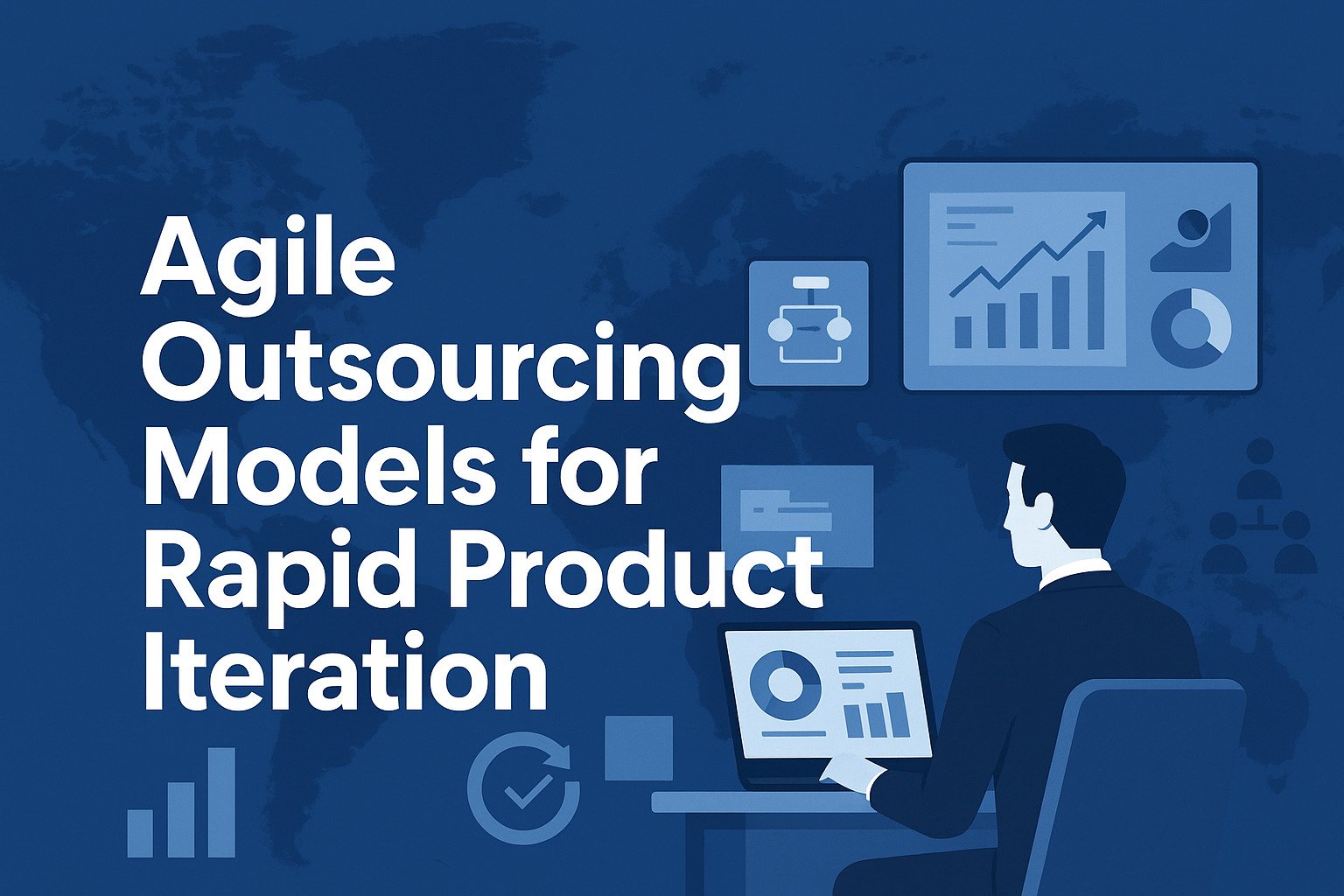Agile Outsourcing Models for Rapid Product Iteration
- 1 min read
Discover how agile outsourcing models enable faster product iteration, improved flexibility, and scalable development for modern tech teams.

Introduction
Rapid product iteration has become essential for companies aiming to stay competitive in fast moving digital environments. As release cycles shorten and customer expectations rise, businesses need development models that support continuous improvement.
Agile outsourcing addresses this need by providing flexible access to specialized talent and adaptive delivery frameworks. Companies gain the ability to scale quickly, validate ideas faster, and maintain momentum across product lifecycles. For European businesses, agile oriented nearshore teams create additional advantages through cultural alignment and real time collaboration.
Why Agile Outsourcing Matters for Modern Product Teams
Agile outsourcing helps companies overcome constraints that slow down product delivery, such as limited engineering capacity, slow hiring processes, or fragmented product workflows.
Key challenges companies face:
- Slow development due to internal team bandwidth limits
- Difficulty keeping pace with iterative product roadmaps
- Long recruitment cycles when scaling in house teams
- Limited access to niche expertise during critical sprints
- High costs of maintaining full time teams for short term needs
What agile outsourcing enables:
- Faster time to market through continuous delivery
- Flexible resource allocation aligned with sprint cycles
- Access to experienced specialists for specific product phases
- A scalable model suited for prototype, MVP, and enterprise builds
- Improved cross functional communication and iteration speed
Reference: NIST Agile Research on iterative engineering practices McKinsey insights on development speed and business performance

Agile Outsourcing Models (H2)
1. Sprint Based Outsourcing
A model where external engineers join your sprint cycles.
- Ideal for teams that already work with Scrum or Kanban
- Ensures constant delivery with 1 or 2 week sprint structures
- Enables rapid feature iteration and testing
2. Dedicated Agile Product Teams
A fully staffed nearshore team working as an extension of the client's engineering department.
- Long term collaboration with stable team composition
- Strong knowledge continuity
- Best for complex products that evolve over time
3. Hybrid On Demand Teams
A flexible approach where companies activate specialists when needed.
- Great for rapid prototypes, integrations, or research spikes
- No long term hiring obligations
- Reduces cost while keeping iteration speed high
4. Agile Pods for Feature Ownership
Small cross functional groups working on specific components.
- Clear accountability
- Parallel development streams
- Faster delivery without disrupting core teams
Reference: Scrum Alliance studies on distributed agile efficiency
Technology Factors Driving Agile Outsourcing
Modern tools and frameworks enable seamless collaboration between in house and nearshore engineers.
Key contributors:
- Cloud based CI/CD pipelines that accelerate deployment cycles
- Version control platforms enabling parallel development
- Automated testing frameworks that support quick validation
- Async communication tools improving daily stand ups
- Advanced monitoring and analytics for product adjustments
Trusted sources: Google Cloud Engineering Practices documentation ISO 29110 Agile software lifecycle guidelines
Industry Insight
The European tech ecosystem increasingly relies on agile nearshore partners to keep up with rapid iteration demands. Gartner reports that companies using distributed agile teams achieve up to 30 percent faster feature delivery due to better workload balancing and faster staffing cycles.
Statista's 2024 research shows that over 65 percent of mid sized European companies plan to expand or maintain their outsourcing footprint specifically for agile product cycles.
This shift reflects a broader trend toward hybrid engineering models that combine internal product leadership with external execution velocity.
Euro IT Sourcing Perspective
From our experience working with European tech firms, agile outsourcing succeeds when communication, alignment, and delivery rhythm are treated as core pillars. Companies that integrate external teams into their stand ups, backlog grooming sessions, and sprint reviews consistently achieve higher iteration speed and fewer production bottlenecks.
We also see growing demand for flexible skill sets. Many products require fluid transitions between frontend, backend, QA, DevOps, and cloud engineering. Agile outsourcing models make this shift seamless by providing multidisciplinary teams that adapt to changing roadmap priorities.
Results or Impact
Companies leveraging agile outsourcing typically observe:
- 20 to 40 percent reduction in product delivery time
- Faster validation of features through short sprint cycles
- Improved scalability without long hiring cycles
- Ability to run multiple development tracks in parallel
- Higher productivity due to access to specialized skills
Benchmarks are based on aggregated industry reports and project performance patterns within Europe.
Key Takeaways
- Agile outsourcing accelerates product iteration and supports rapid roadmap execution.
- Flexible models like sprint teams, agile pods, and hybrid staffing adjust to changing needs.
- Nearshore European teams enhance alignment, collaboration, and delivery speed.
- Modern tools enable seamless distributed agile workflows.
- Businesses gain scalability, reduced time to market, and improved product quality.
Author & Contact
Author: Matt Borekci Contact Us: Euro IT Sourcing

Why Micro-Outsourcing Is the Next Big Trend for Startups
Discover why micro-outsourcing is becoming a strategic advantage for startups aiming for agility, innovation, and cost efficiency in software development.